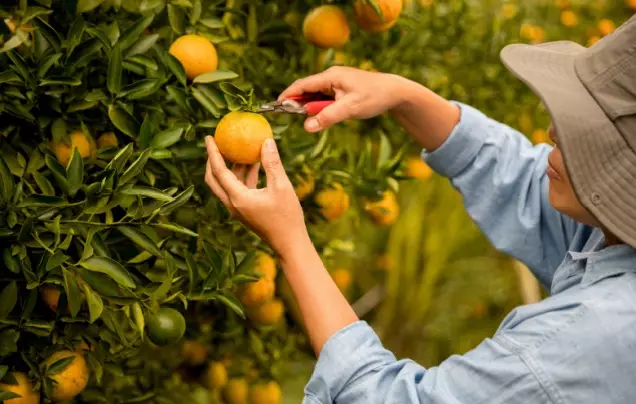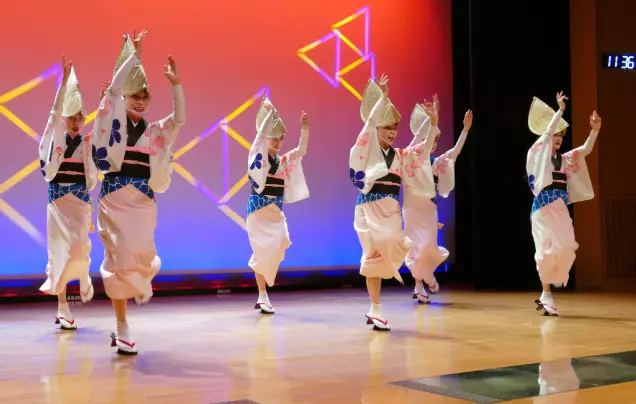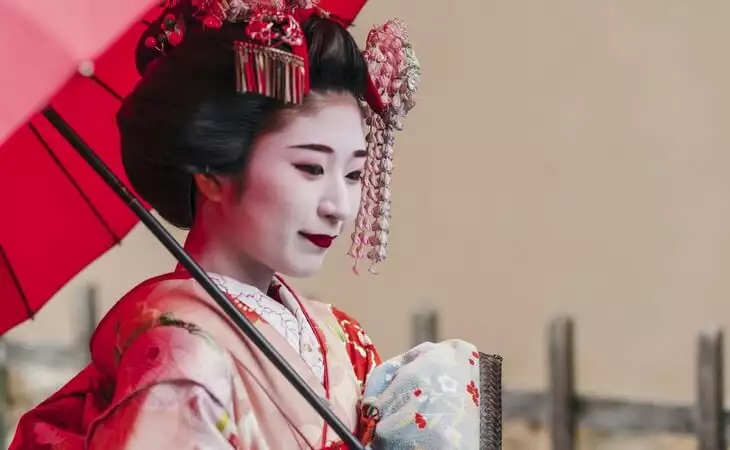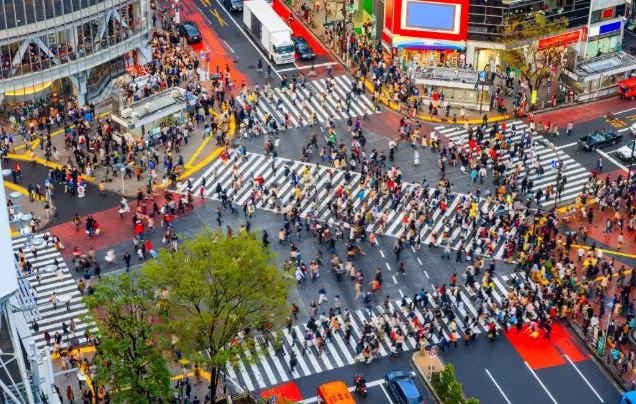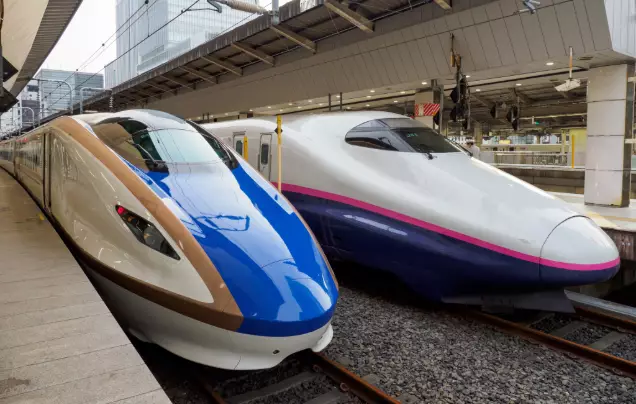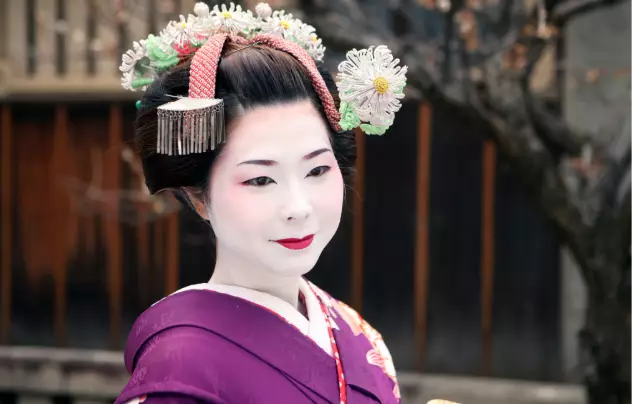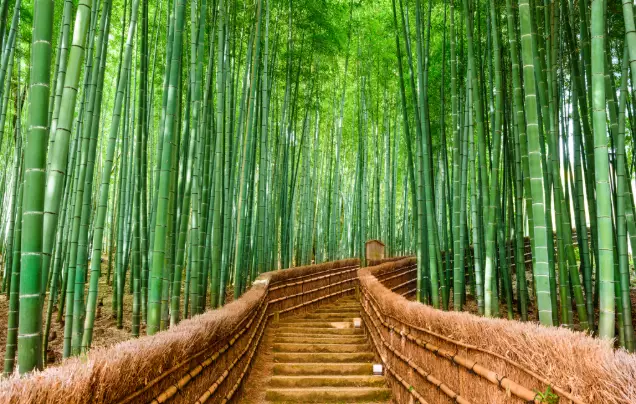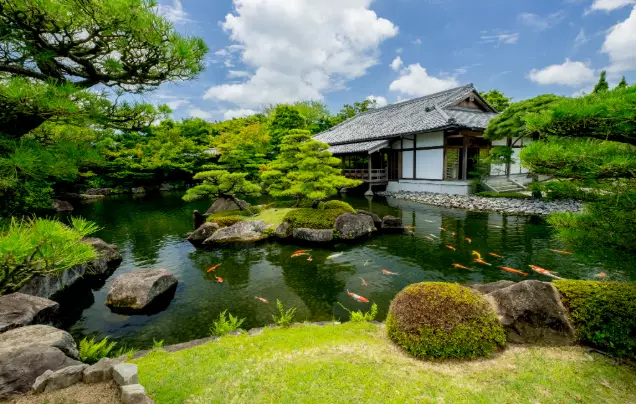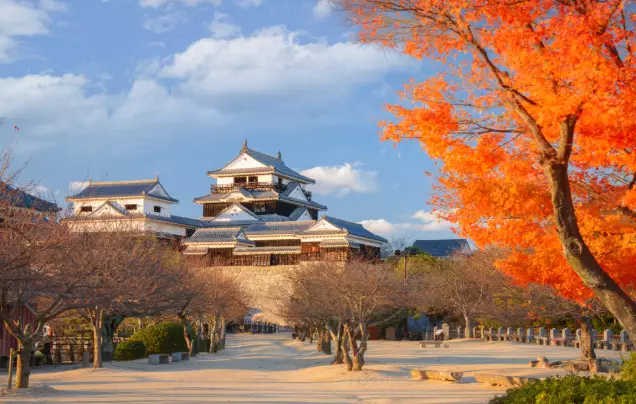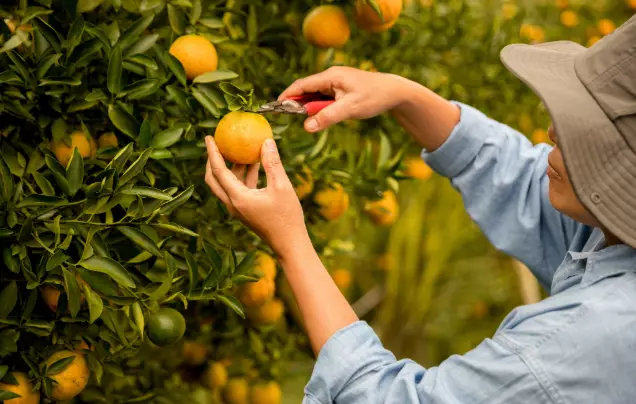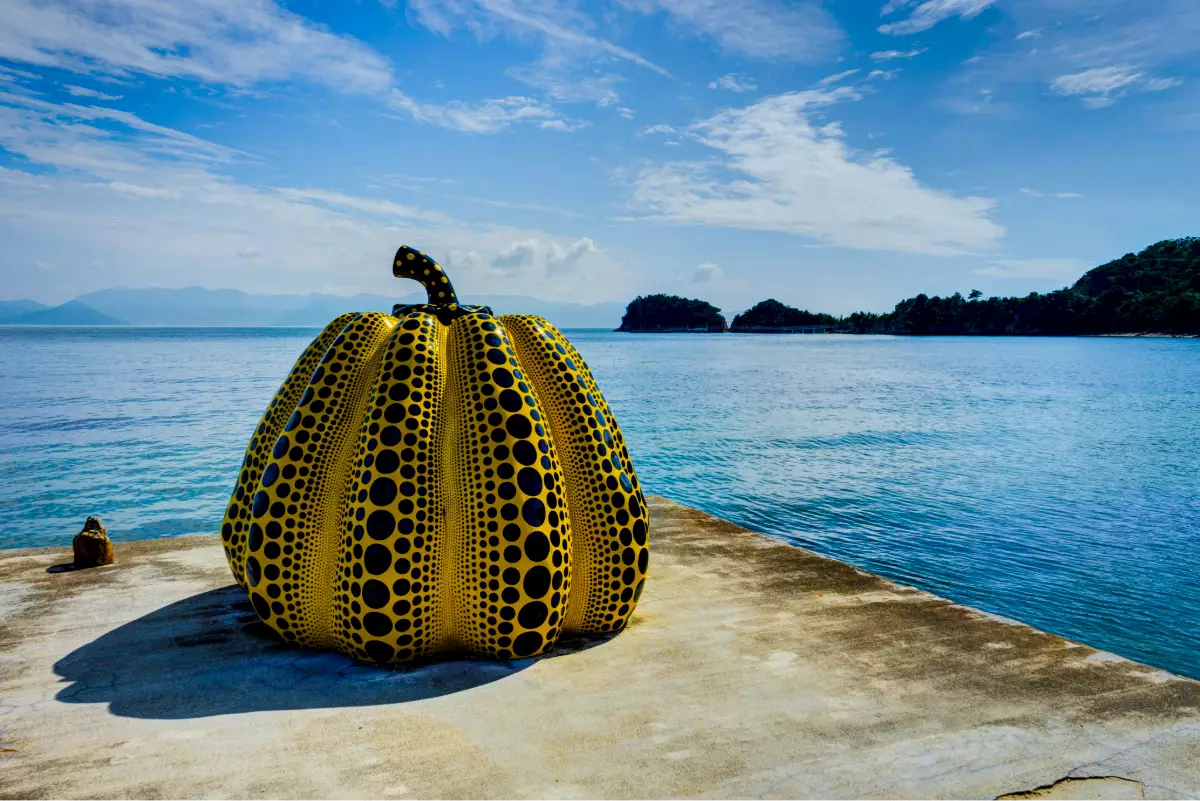Limited time offer - Save up to £600pp Offer ends: 23 Dec 2025 View Offers
Discover Japan's many contrasts – from the rolling hills of Shikoku to Tokyo's dazzling skyline and Kyoto's timeless grace.
Along the way, you'll meet an apprentice geisha, wander fragrant citrus farms, and explore Naoshima's world of contemporary art beside the tranquil waters of the Seto Inland Sea. You'll also pay your respects at Hiroshima, enjoy the majesty of Mount Fuji, and experience a traditional tea ceremony.
This tour is designed for travellers who want to enjoy Japan's signature sights, while also spending time on the lesser-visited shores of Shikoku and the Seto Inland Sea.
Our Gems of Japan & Shikoku tour will see you exploring the most iconic sites, delving into deep-rooted culture and dining on delicious cuisine.
Explore Naoshima's eclectic contemporary art collections,from light-filled art galleries to open-air installations
Explore Shikoku's beautiful Ritsurin Garden, with its koi-filled ponds, elegant bridges, and thousands of towering pines
Visit the rolling green tea fields of Shizuoka, with striking views of Mount Fuji beyond
Experience Tokyo's exhilirating Sumo Tournament (selected dates in May & September)
Meet a local farmer, who will show you how to pick your own mikan (mandarin orange) – in the fragrant citrus groves of Shikoku, known as Japan's Citrus Kingdom.
Experience the lively demonstration of the Awa Odori festival dance in Tokushima. Skilled dancers bring this centuries-old tradition to life on stage, blending music, movement, and humour.
Enjoy a lunchtime visit from a very special guest: a maiko, or apprentice geisha! Geisha are increasingly hard to spot in Kyoto, so enjoy this rare, guaranteed glimpse into their secretive world.
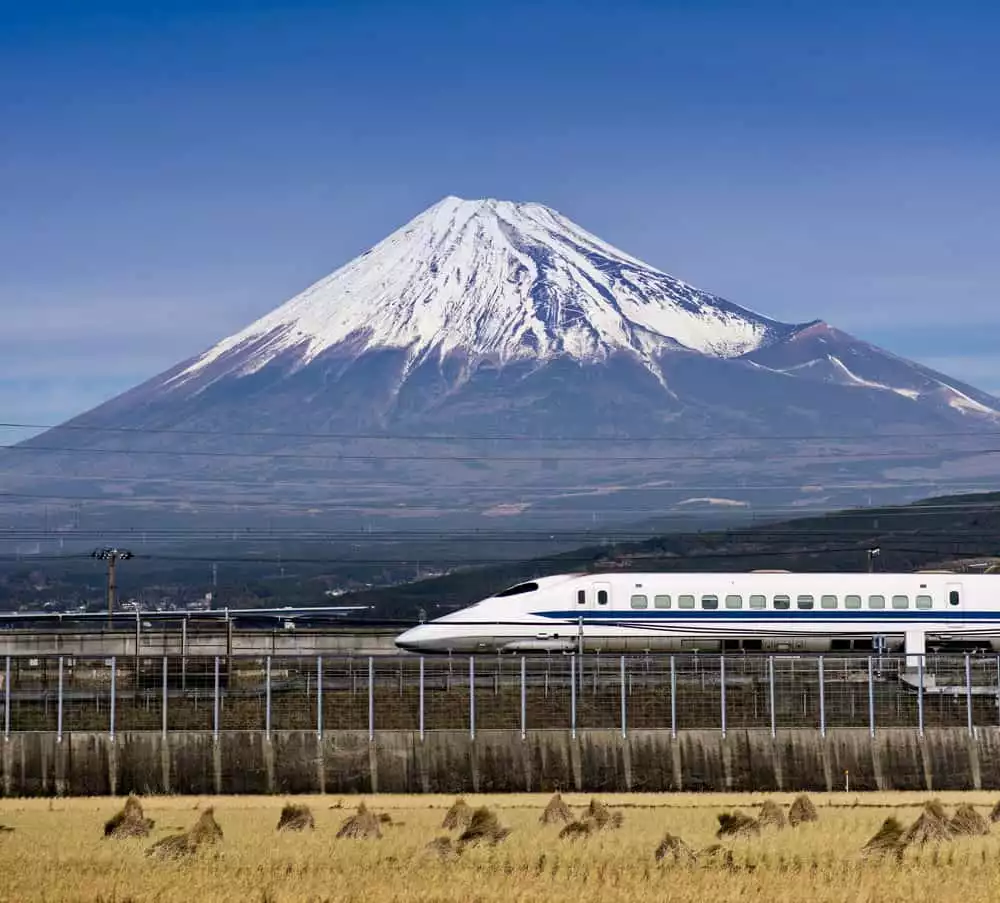
It may come as a surprise, but trains can run on time! One of Japan’s modern wonders is its extensive rail network – safe, comfortable, efficient, punctual, and fast, it is world-renowned for all the right reasons, and a travel experience that should be on every bucketlist.
Bullet trains, known locally as shinkansen, travel up to 320 kilometres an hour and connect almost every major city on Japan’s main islands. The rest of the network is covered by Limited Express, Express, Rapid and Local trains, each characterised by their speed and number of stops they make.
One of the many joys of Japan’s railway is that they are used by everyone, from students to suited professionals, so there’s always an interesting cross-section of society sitting around you – what better people watching and window into daily life in Japan?

Japan’s high-speed bullet trains, operated by JR Group, shinkansen travel at speeds of 320 kilometres an hour between Japan’s major cities and makes very few stops en route. This type of train runs on separate tracks and has separate platforms to the other types of trains as they use a standard track gauge.
Once onboard, you would be forgiven for thinking you just got onto a plane from the layout. Seats are generally in rows of 3+2 across carriage and are all forward facing (they can be flipped), spacious and comfortable, and on most services there is free wi-fi available for passengers.
Settling in, you’ll notice the carriages have an almost Zen-like feel, the atmosphere peaceful and calm and your surroundings spotlessly clean. This may come from the train etiquette that is followed by the majority of passengers, like speaking quietly, not taking up excess space, not putting feet on seats or leaving rubbish and orderly boarding. You’ll even notice that the ticket inspector bows to passengers as he enters the carriage to check your tickets!
As shinkansen are long distance trains, you are able to eat in your seat as you travel - most people grab something at the station before they board (we’ll discuss ekiben later!) or some services may have a food and drink service onboard.
We use shinkansen trains on several of our Japan tours, including Japan by Rail tour.
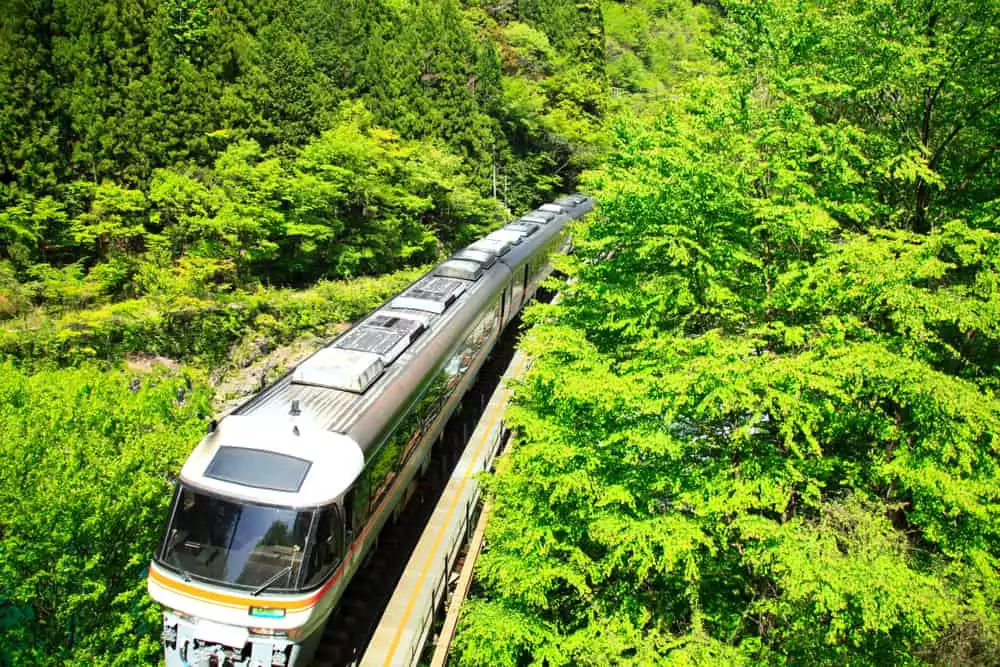
As the name suggests, these trains travel fast (second to the Shinkansen, of course) and still only make a limited number of stops, though they serve more stations than the Shinkansen would. There are two different types of Limited Express, intercity and commuter.
The intercity run with longer distance with better equipped, more comfortable carriages and have reserved seating and in some cases, a dining car selling food and drink. Big panoramic windows allow you to enjoy the scenery that you are passing through – with the lovely squishy seats and plenty of legroom, you can sit back, relax and savour the journey. We use Limited Express services on our Japan by Rail tour.
Commuter trains tend to be better for shorter journeys, with first-come, first-served seating and carriages that are designed to fit more people in them.
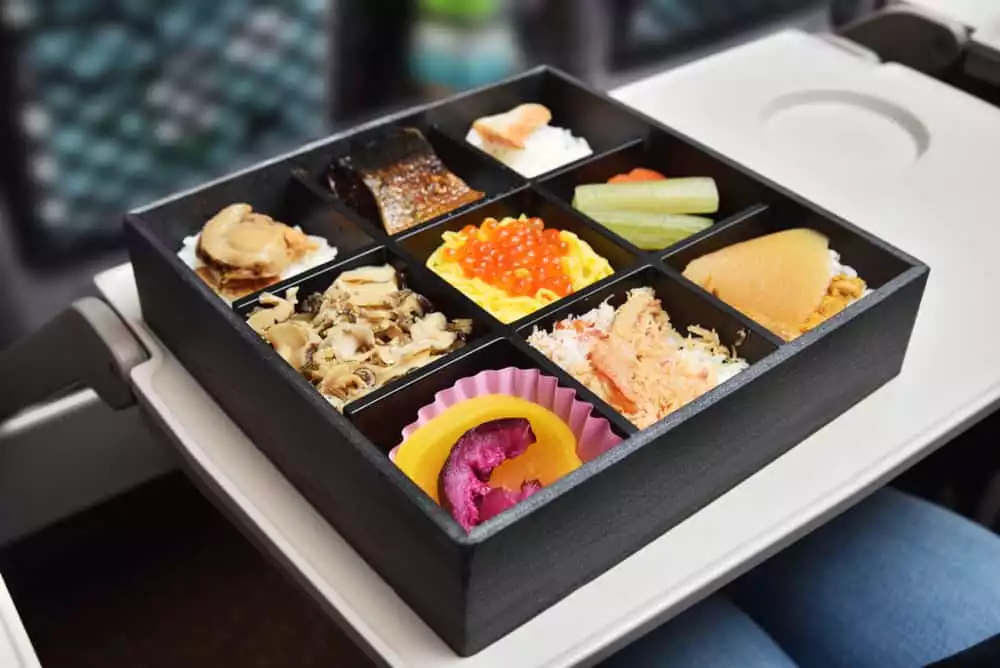
Home to most of the top 50 busiest train stations in the world, trains are Japan’s most utilised public transport and, as we’ve said above, incredibly reliable, efficient, and punctual. Arriving at a station, especially at rush hour, you might feel like you’ve walked into chaos, but if you observe for a minute, you’ll notice that everything is working like clockwork.
Beyond their busyness, Japanese train stations take things to the next level – you may notice blue lighting and musical melodies that notify of train departures, designed to keep passengers calm in the bustling environment, how spacious and clean there are and how intuitive they are to navigate. Another thing to look out for is the architecture of the stations themselves. Those in big cities are attractions in their own right, some historical, from the early 20th century and others modern, but inspired by local culture.
The final thing to mention about the train stations is the ekiben. A portmanteau of eki (train station) and ben (bento), ekiben are a Japanese train travel institution and the world’s best, most delicious lunch boxes! Usually containing something like sushi or rice, vegetables, pickles and a protein, there are hundreds of different types available at train stations for passengers to grab for their longer journeys, you’ll easily spot their decorative boxes – there are even regional variations using popular local produce! While traditionally served cold, some ekiben come in self-heating boxes that will warm up your food before you eat it. Following train etiquette, eating is acceptable on long distance trains as long as you tidy up after yourself.
Fly overnight to Tokyo, Japan's buzzing capital. Depending on your time of arrival, the rest of the day is yours to start soaking up the local culture.
Uncover Tokyo's origins at the Open-Air Architectural Garden, where preserved homes and public buildings offer a glimpse into two hundred years of Tokyo's history. Stroll among restored homes, izakayas and bathhouses that capture the charm of old Tokyo. After lunch, return to central Tokyo and enjoy the modern-day buzz of Shibuya Scramble Crossing, then ascend Shibuya Sky to take in views of the city's glittering skyline. Return to your hotel, stopping en route for a photo of the iconic Godzilla Head landmark in Shinjuku.
Begin at the Sumida Hokusai Museum, celebrating the legendary 19th century artist whose Great Wave brought Japan's ukiyo-e art to global fame. After lunch, delve deeper into the city's story at the newly renovated Edo-Tokyo Museum. Explore vivid dioramas and trace Tokyo's evolution through war, recovery, and innovation into the vibrant metropolis of today. In the afternoon, return to the hotel. Alternatively, on select May & September departures, witness Japan's national sport at the thrilling Tokyo Sumo Tournament!
Drive to Shizuoka Prefecture, famous for its green tea farms. Visit a tea plantation and enjoy a morning cup of green tea before lunch. This afternoon, head to the Mount Fuji World Heritage Centre to learn about Japan's most iconic mountain. Continue to the seaside city of Shizuoka and enjoy 360-degree views of Fuji and the Japanese coastline from Nihondaira Yume Terrace. Overnight in Shizuoka.
Drive to Okazaki to visit a historic miso factory, which has been producing hatcho miso for more than five centuries. This style of miso is thicker and purer than other styles, resulting in a rich umami flavour which you can savour at lunch. Continue to Nagoya's SCMaglev and Railway Park to discover Japan's world-renowned rail heritage. Step inside historic carriages, admire full-scale bullet trains, and see how cutting-edge technology has shaped high-speed travel. Later, experience it for yourself aboard the shinkansen to Kyoto, your home for the next three nights.
Immerse yourself in Kyoto's ancient culture. Begin your day with a morning tea ceremony, observing its historic rituals, then head to the famously photogenic Golden Pavilion of Kinkaku-ji. At lunchtime, enjoy a visit from a very special guest: a maiko, or apprentice geisha! Geisha are increasingly hard to spot in Kyoto, so this is a fascinating opportunity for a glimpse into their secretive world. Continue to Ryoan-ji, a Zen temple famed for its beautiful rock garden, before returning to your hotel.
Begin the morning in Arashiyama's famous bamboo forest, where towering thickets create a serene atmosphere. Admire the historic Togetsu-kyo Bridge before visiting Tenryu-ji Temple, renowned for its tranquil pond. Enjoy a temple-style lunch at its Bib Gourmand-listed restaurant, then spend the afternoon at leisure, relaxing or exploring Kyoto independently.
Board the bullet train for a 45-minute ride to Himeji, where the imposing white facade of Himeji Castle awaits. Stop outside for photos, then head to the lovely Koko-en Gardens nearby. Later, take a one-hour bullet train to Hiroshima, your home for the next two nights.
Spend the morning in reflection at the poignant Peace Memorial Park and Museum, paying homage to the victims of the 1945 atomic bomb. After lunch, board a ferry to the lovely island of Miyajima, with free time to admire its 'floating' Torii Gate on the edge of the Seto Inland Sea. Return to Hiroshima before dinner.
Bid farewell to Honshu and take the ferry from Hiroshima to Shikoku, one of Japan's four main islands. Often overlooked by travellers, mountainous Shikoku rewards those who visit with rich culture and quiet charm. Arrive in Matsuyama and hop on the cable car to explore its historic hilltop castle before lunch. This afternoon, visit Dogo Onsen Honkan, Japan's oldest hot spring, to soak in its soothing waters.
Begin the day at Mount Kirosan Observatory, admiring sweeping views of the tiny green islands that stud the Seto Inland Sea. Continue to one of Shikoku's famed citrus farms to pick your own mikan orange and savour the sweet, bright flavour of this local speciality. Later, enjoy a scenic drive across the island to Ritsurin Garden, a masterpiece of ponds, bridges, and manicured pines. Stroll its serene paths before checking in at your hotel in the port city of Takamatsu.
Hop on a ferry to the intriguing island of Naoshima, celebrated for its eclectic contemporary art collections. Visit the island's premier gallery, Benesse House, to explore its blend of indoor exhibits and open-air installations set against sea views. Among its most iconic works is Yayoi Kusama's polka-dot 'Yellow Pumpkin' sculpture, a symbol of modern Japanese art. Return to Takamatsu.
Journey one hour to Tokushima, on Shikoku's eastern coast, to visit the Awa Odori Festival Museum. Learn about Shikoku's joyful summer festival, and enjoy an energetic live performance by local dancers. After lunch, continue to the Naruto Strait to view its famous whirlpools (tide permitting) from a walkway above the swirling currents. Continue to Osaka ahead of this evening's farewell dinner.
Farewell, Japan! Transfer to the airport for your flight home, arriving the same or following day. Alternatively, why not extend your trip? Talk to our reservations team about extensions to Nara, or combining your Honshu & Shikoku tour with our Spirit of Kyushu tour for an even deeper journey through Japan.
Our tours feature hand-picked properties selected for their comfort, modern amenities and convenient location for sightseeing. We occasionally include a stay in a guesthouse or lodge where we feel the character of the property will enhance your tour, or to allow access to a more unique and memorable location. Here is a taster of the type of hotels you will be staying in on your tour.
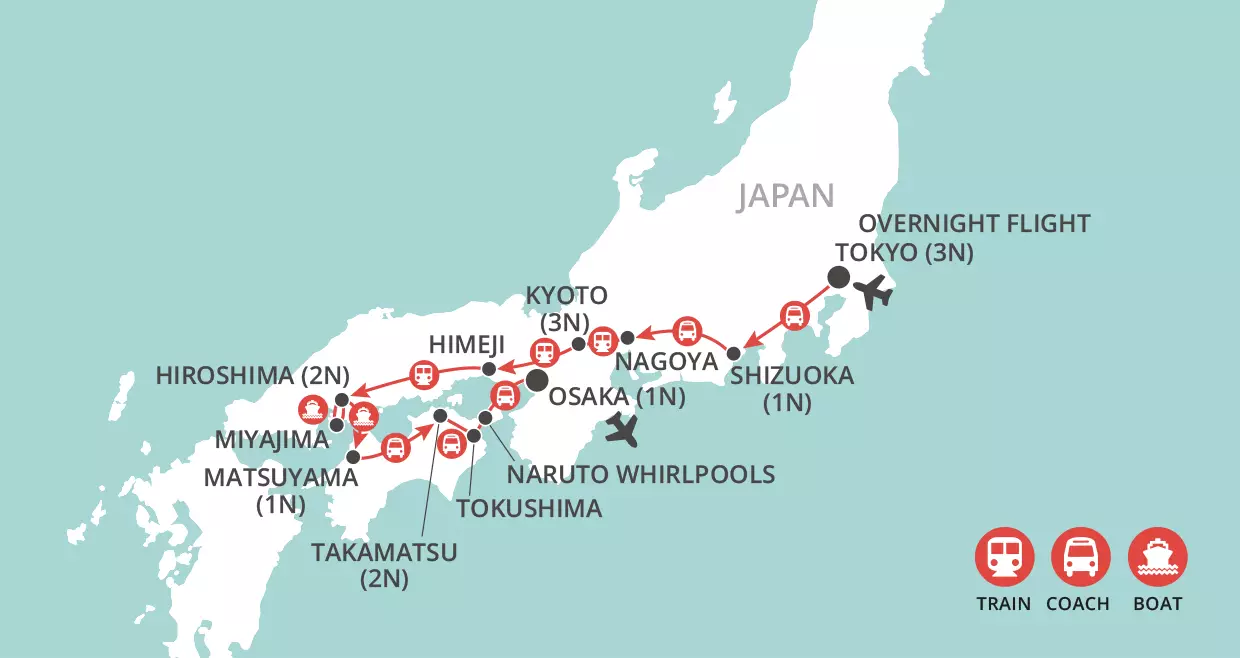
Places Visited: Tokyo (3N) - Shizuoka (1N) - Kyoto (3N) - Hiroshima (2N) - Matsuyama (1N) - Takamatsu (2N) - Osaka (1N)
If your tour departs in less than 30 days, please call our travel experts to book. Read our Price Match Promise
Save up to £600pp - for a limited time only
This offer IS combinable with your Wendy Wu Club Loyalty Discount
Fetching Price Information - please wait
Dedicated Solo departures are available on selected dates for this tour.
These solos-only departures feature smaller group sizes of up to 18, along with free airport lounge access.
There are no dedicated Solo departures for this year. You can enjoy any of our tours with no Single Supplement on our Happy to Share option or explore the solo departures in other years.
The same great Wendy Wu tour - just with an extra level of comfort. Enjoy relaxed 5-star city hotels, unique properties, and overnight cruises, each selected to deliver an elevated experience. See Upgraded Tour Hotels above for more details.
Extend your holiday or break up your journey with one of our extensions and stopovers. Choose from city breaks or some beach time, or spend more time in your chosen destination.
Read our latest articles or travel inspiration, exciting news about our destinations and all things Wendy Wu Tours
